
Drizzled over cheesecake, stirred into coffee, mixed into brownies, served with Pot de Creme or dunked with apple slices, caramel sauce is a versatile and fun way to turn any treat into an event, and you only need 4 ingredients to make it from scratch!
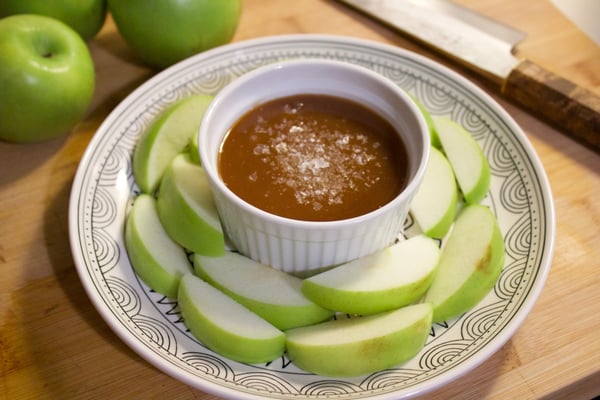
Before you get started, here are a few important things to know about caramel sauce making:
- There are two methods for making caramel: the wet and the dry method. I prefer the wet method because the sugar cooks more evenly when wet than it does when dry. While it might take longer than the dry method, it is only a difference of a few minutes. It’s worth it when it means more control over the level of caramelization happening.
- One con of the wet method for cooking caramel is the potential for crystallization. This is when parts of the sugar refuse to melt away and harden into little grainy pieces. However, there are ways to prevent this:
- Do not stir! Agitating the water and sugar mixture before it reaches caramelization will likely cause crystallization.
- Use a wet pastry brush to gently brush down any sugar grains on the sides of the pan.
- Use a lid to trap steam, which can help incorporate any sugar pieces on the sides of your pan back into the sugar-water solution.
- If you are really cautious, try using a flavorless acid like cream of tartar, or corn syrup, to better stabilize the solution and prevent crystals.
- Keep in mind that the most important part of making caramel is temperature control. If you don’t have a candy thermometer, be sure to use a pan that allows you to clearly see the color of your caramel as it cooks. Color is a big indicator of what stage or temperature you are at.
- With the wet method, you will come across many recipes with varying water to sugar ratios. Just remember you only need a little water to sugar. If you find yourself hovering a little over 200 degrees for a while without much progress, you likely have too much water. It’s okay! Be patient and allow that water to boil off. As it evaporates, the sugar will take over as the dominant ingredient and the temperature will continue rising again as the caramel begins to cook.
- Know that the shape of your saucepan will affect the time it takes you to make caramel from start to finish. For example, a straight-edged pot will take longer to cook your caramel than a slope-edged saucier of the same volume. This is because sloped edges allow for faster evaporation of the water. Also, do not fill your pot/pan more than 1/3 of the way up with sugar and water. It will expand A LOT when you add cream later.
- When you reach an amber color, turn your heat off and allow the residual heat to finish off the caramel. If you are worried your pan is retaining too much heat and may take the caramel too far, have a big bowl of cold water handy to lower the bottom of your pan into. This will help cool it more rapidly and stop the cooking process.
- When adding your heavy cream and butter, STAND BACK. Sugar has a much higher boiling point than water, which means it is hotter than hot. A lot of steam is released when you add your cream.
Now, put those tips to use and make this basic caramel sauce.
Caramel Sauce
2 cups white granulated sugar
3/4 cup water
1 cup heavy cream
1/4 cup butter
You'll also need:
Light colored saucier or pot
Heat proof spatula, whisk, or wooden spoon
Candy Thermometer (if you do not have one, go by color)
1. Begin with the sugar and water in a pot. Make sure you do not splash on the sides of the pan when you combine ingredients as this may cause crystallization down the road. Bring to a boil. Watch the sugar transform from a bubbly pale to a deep amber.
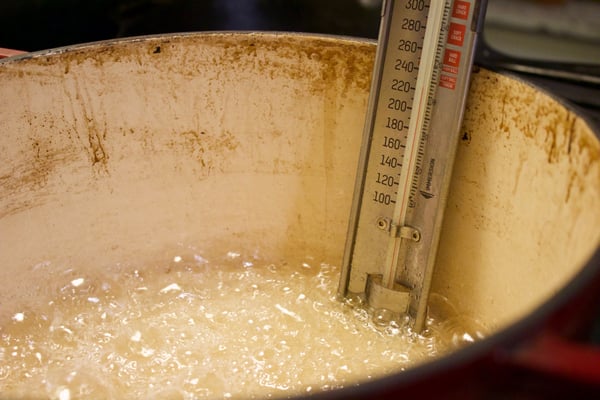
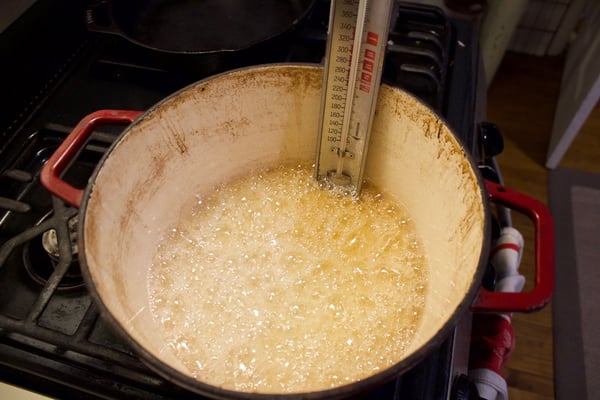
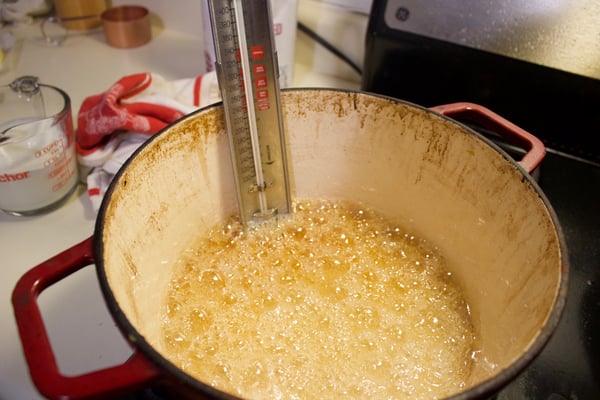
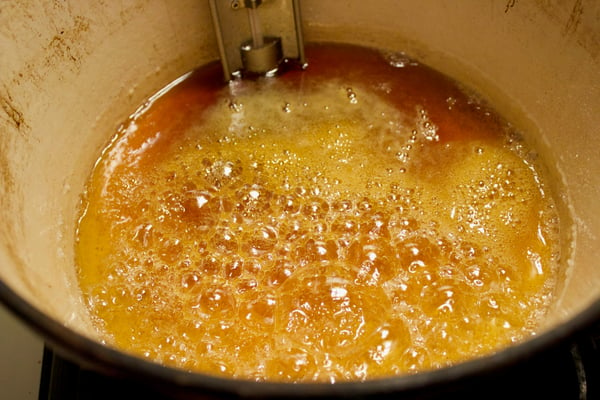
2. Slowly stir in cream and butter. Continue stirring to make sure all caramel has cream and butter incorporated.
3. Allow to cool, and enjoy with a little salt, vanilla, espresso powder, cocoa, cinnamon, reduced wine, bourbon…. the list goes on! Store in the fridge.
Caramel takes practice, but it is not something to fear! And the results are so much better than store-bought caramel. Complex, rich, and smooth, it is hard not to just eat it with a spoon.
Looking for more caramel? Check out The Chopping Block's Warming Winter Party happening this Friday, December 21 at 7pm at Lincoln Square. It includes one of my favorite caramel desserts - Sticky Toffee Pudding.

